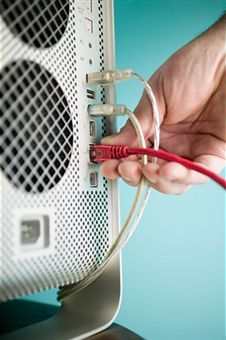How to Fix USB Ports That Don’t Work


Of the many technologies which have had a huge impact on the computing world, USB (Universal Serial Bus) is an important one. The plug and play facility that it provides has made the use of storage devices like external hard drives, USB flash drives and other peripherals like printers quite easy. USB ports rarely cause any problems and when they do, troubleshooting them is not much of a hassle.
Device portability has been made possible because of these ports. Not just desktop and laptop computers but gaming consoles and smart phones are also fitted with these ports now. With USB 2.0 providing up to 480 Mbps of transfer speeds, data transfer is quite fast. The ports can be recognized by a trident symbol that is etched near each port.
When you find USB ports to be dysfunctional on laptops, life can be difficult, as connecting jump drives and devices like printers becomes impossible. In such cases, where you see ‘USB device not recognized’ error message, the source of the problem may be the port. This problem can usually be fixed quite easily, as it mostly lies at a software level. Let me list the various troubleshooting techniques in the following section.
Troubleshooting Faulty Ports
Every hardware device interfaces with the installed computer operating system through the driver software. A problem with most hardware devices, most of the time, can be traced to problems with installed drivers. Here are some ways in which you can troubleshoot the ports at a software level.
Simply Restart the Computer
If USB ports have stopped working, what would be the simplest way of fixing them? Just restart the computer. If there has been any problem while loading drivers, it will be solved after a restart.
Run Device Manager
If restarting your computer doesn’t work or if it isn’t an option for you, then run the device manager. In case you find USB ports not working on XP, just use device manager by typing in ‘devmgmt.msc’ in the search box and running the application. In the window that opens, click on ‘computer’ in the list, go to the ‘action’ tab and click on ‘Scan for hardware changes’. See if a USB device is listed in the hardware changes. If it is, your problem is solved as the port will now recognize devices.
Disable USB Controller
Another way to deal with USB not working is to disable and subsequently reinstall the USB controller devices. To do that you must go to ‘Start’ and type ‘devmgmt.msc’ in the search box and run it. In the list that you see inside the window that opens, locate the USB controllers. Right click and uninstall all of them. Once you have finished uninstalling all the controllers, just restart the computer. The controllers will be reinstalled as the ports are recognized. That may solve your problem.
Update USB Port Driver
Another reason for port failure is the corruption of USB driver. The only way out is to search for the right drivers and reinstall them. You may have to know the manufacturer of the port device and its code to download the appropriate driver. The restoration of the proper driver should fix the problem for you in a jiffy.
If none of the above methods work, it is likely that the USB port has been physically damaged. In that case, it is best that you get it replaced or repaired from a computer technician. However, I am sure that your problem will mostly be limited to the software level and it will be solved by applying the above fixes.

